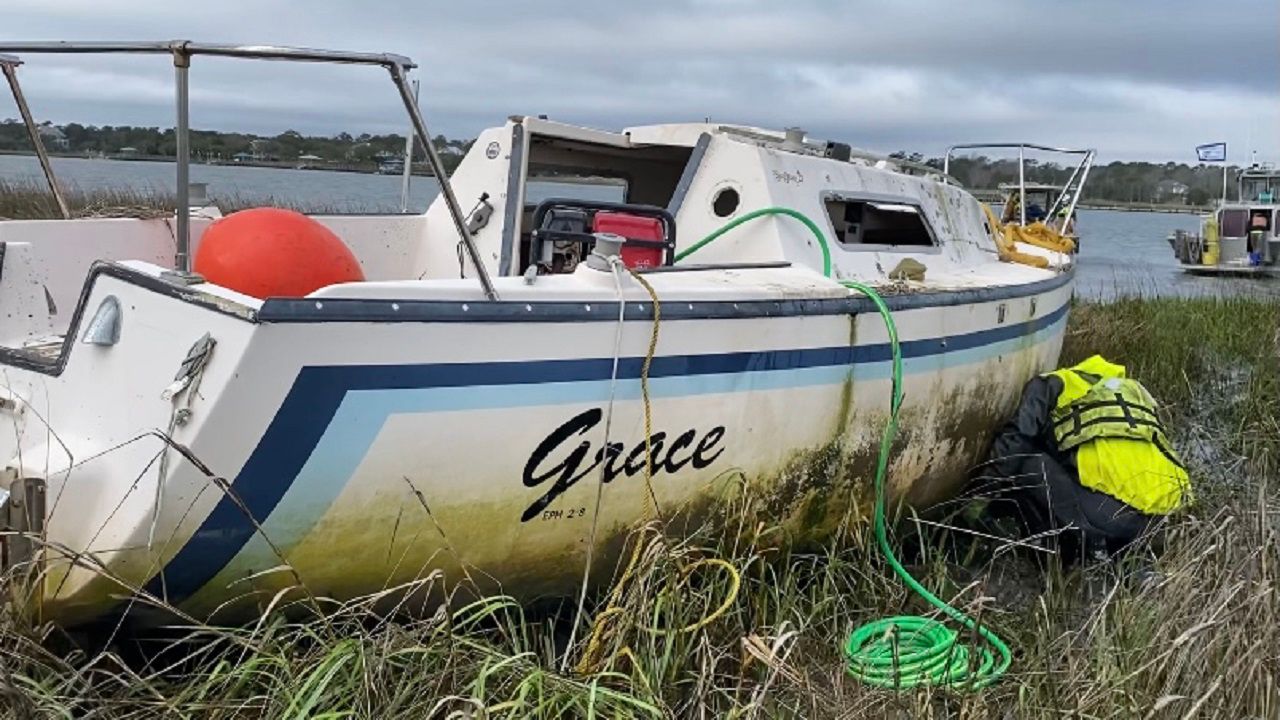WILMINGTON, N.C. — The North Carolina Coastal Federation is in the process of removing hundreds of abandoned boats from our waterways.
The removal process is slow and complicated because the boats are still personal property of private citizens. In order for the state to be able to remove a vessel, it has to have been sitting abandoned for at least 30 days.
“When the list started out, there were about 300 vessels all along the coast and gradually, some of those have been removed by the owners,” said Ted Wilgis with the Coastal Federation.
The ships can end up abandoned for multiple reasons, including anything from storms and hurricanes, to owners purposely discarding the boat. Either way, Wilgis said the boats are not only an eyesore and a danger to the population, but they're having a negative impact on the economy.
“Our coast is a huge economic driver for the state,” Wilgis said. “Tourism, fishing, recreational, commercial fishing, eco-tourism — all that is a huge economic driver for the coast. When our coast is littered with abandoned vessels and debris, it becomes less of a draw.”
Not only does it affect the tourism, if it weren't for grant funding, the multi-million dollar bill for removal would fall solely on taxpayers. The legislature is currently working to find better ways to hold owners accountable for the cost of removing the vessel.
“You have to deem it abandoned and you have to track down the owner,” Wilgis said. “It's a very long process and there really wasn't a good regulatory framework.”
Joe Huie and his crew have worked with the Coastal Federation for years to remove small debris from the water, but these boats are a little outside their area of expertise.
“When we all got on the job, we were all fishermen,” Huie said. “We thought that the trash and the debris and the boats was bad but once we started this, we had no idea how bad it was because you can't see it. Even some of these vessels are tucked away. You take a boat ride down here, you'll see one or two but you don't see the five or six that are behind Masonboro or behind these spoil islands.”
Most of these boats have been sitting in the water for years and there is nothing worth salvaging. The outside may be in poor condition, but the inside can be even worse as many are still fully stocked with food and clothing.
Whether they're beached on an island, stuck in a marsh or sunk in a waterway, Huie said they're a hazard – releasing pollutants and creating roadblocks to other boats. The derelict vessels rarely stay in one place over time and when storms roll through, the deserted ships can change locations, crushing marsh grass in the process and contaminating the environment.
“Some might be right on the shore, which may be easily recoverable and then some could be 100-200 yards up in the marsh by the woodline, which is a whole feat upon itself to try to get out,” Huie said.
Contractors are making slow progress up the coast, removing the boats that are priority vessels at this point and they plan to make another sweep later using different funding.
